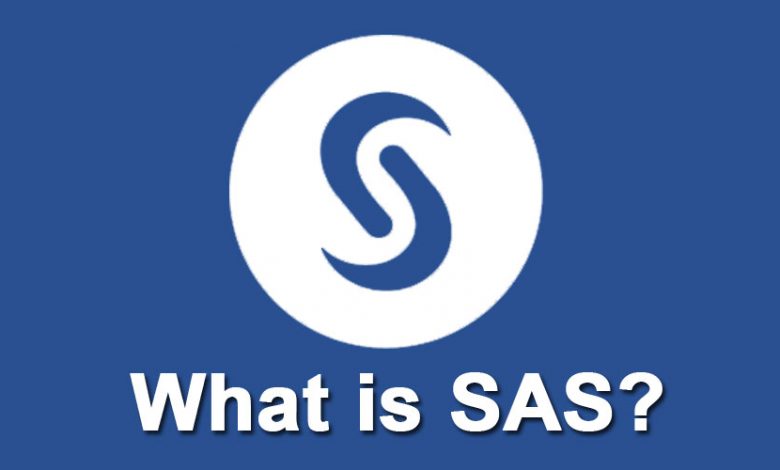What is SAS?

SAS stands for Statistical Analysis Software (also referred to as Statistical Analysis Software). It is a software suite used for data analysis, visualization, and reporting. It is also an appropriate tool for advanced analytics, predictive analysis, business intelligence, data management, data mining. It is one of the most popular advanced statistical analysis tools used in the commercial analytics space by large established companies and multinational organizations. It is also popularly used in the education industry. SAS supports both Windows, Linux, and UNIX operating systems.
SAS is an essential skill that professionals in the data analysis, data science, and programming fields should consider acquiring if they do not already have it. As they consider pursuing a Data Science certification course, professionals should also consider acquiring SAS skills or, better still, acquiring the SAS certified data scientist credential.
Being an integrated system with a collection of software components and services, SAS can handle a range of tasks, including
- Data access from various internal and external sources
- Data management
- Data analysis and advanced analytics
- Visualization and reporting
Table of Contents
SAS Modules
SAS comes with more than 200 inbuilt modules, each of which is designed for a specific function, including forecasting, statistical analysis, and reporting. Some widely used SAS modules are:
-
Base SAS
Base SAS is the foundation module of SAS. It is the programming language used to perform various foundational processes on data such as storage, access, organization, processing, analysis, and reporting.
-
SAS studio
SAS Studio is a web-based application used to write and run SAS code on your web browser. Access your libraries, data files, and programs wherever you are using SAS Studio.
-
SAS Enterprise Guide
This SAS client application is a point-and-click data analysis wizard-driven Windows GUI. It is a solution for quick guided data management, analysis, and forecasting as well as a great tool for those that do not have a solid technical data analysis background. Enterprise Guide is also built with limited code generating capabilities.
-
SAS/ACCESS
The SAS/ACCESS module allows users to read, write, and update data from more than 60 sources of data, including SQL, ORACLE DB2, Microsoft Access, and Teradata.
-
SAS/STAT
This module runs statistical analysis techniques on data. It features a range of statistical techniques for both specialized and general enterprise needs. These include linear and logistic regression, multivariate analysis, statistical inference, predictive modeling, and many more.
-
SAS Grid Manager
The SAS grid manager facilitates enterprise job scheduling, workload balancing, and parallelism of application workloads in distributed environments.
-
SAS display manager
The SAS Display Manager (DM) allows users to build a variety of screens and dialogue boxes for interaction between SAS, the OS, and the user.
-
SAS/GRAPH
The SAS/GRAPH module allows you to build simple or complex graphs.
SAS Features
SAS is a comprehensive suite designed with data management tools, statistical analysis techniques, and easy-to-follow graphical procedures. This makes SAS a powerful data analysis tool with remarkable features. Some core SAS features that make it one of the most popular business analytics tools include:
- Supports various data sources and formats. The SAS programming language can read and write data from relational and nonrelational databases, PC files, ORC engine, SPD engine, V9 engine, SAS SQL, and more. It can also access data from both internal and external databases.
- Powerful analytics capabilities. SAS features a collection of more than 200 data analysis modules, techniques, and inbuilt libraries, each with a unique analysis function for both simple and advanced level statistics. You can analyze data using descriptive statistics; univariate, bivariate, and multivariate techniques; regression analysis, linear programming, as well as advanced statistical analysis techniques.
- Flexible programming language. SAS fully supports multiple programming languages. The SAS language is a fourth-generation programming language that features a simple easy-to-learn syntax with statement-like commands that are easy for people without a programming background to understand.
- Excellent data management. SAS is built with the capability to manage large databases effectively. Also, its environment manager effectively monitors and manages all SAS technologies including analytics processes.
- SAS is highly secure. SAS is designed to provide high-level security. SAS is not open-source, which limits data manipulation and management to the licensed organization. This means that external access or manipulation is almost impossible.
- SAS is platform-independent. SAS can run on Windows and Linux operating systems.
Advantages of SAS
- SAS is easy to learn and understand. It is not overly technical thus can be operated by professionals from a nontechnical background.
- SAS boasts of reliable dedicated customer support who are available to handle all SAS system-related queries.
- SAS has an intuitive graphical user interface
- SAS is closed-source to mean that it has tight data security
- With an easily understandable programming language, SAS is easy to debug.
What can you do with SAS?
SAS comes with a wide range of functionalities, including:
- Statistical analysis
- Predictive analytics
- Updating datasets
- Generating graphical reports and visualizations
- Application development
- Data extraction, manipulation, and management
- Business planning
- Project management and operations research


